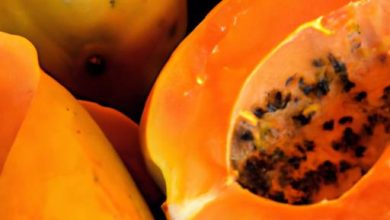Do Grasshoppers Turn into Locusts? Understanding the Transformation

Grasshoppers and locusts have always fascinated us with their ability to change forms. Have you ever wondered if these two insects are actually the same creatures in different stages of life? In this article, we will delve into the intriguing world of grasshoppers and locusts to understand their transformation.
Definition of Grasshoppers and Locusts
To begin with, let’s define what exactly grasshoppers and locusts are. Grasshoppers are commonly known as herbivorous insects that belong to the suborder Caelifera. They are found in various habitats worldwide and are known for their ability to jump long distances. On the other hand, locusts are a type of grasshopper that undergo a remarkable transformation under certain conditions. When triggered by specific environmental factors, grasshoppers can morph into locusts, which are highly mobile and form destructive swarms.
Importance of Understanding the Transformation
Understanding the transformation from grasshoppers to locusts is crucial for several reasons. First and foremost, it helps us comprehend the complex life cycle of these insects. By studying their developmental stages, we gain insights into their behavior, reproduction, and adaptation to different environments. Moreover, understanding the triggers for locust transformation enables us to predict and prepare for potential locust outbreaks, ultimately aiding in pest management and agricultural practices.
So, let’s embark on this fascinating journey to explore the life cycle, triggers, and physical changes that occur when grasshoppers turn into locusts. By unraveling the mysteries of this transformation, we can better appreciate the wonders of nature and work towards mitigating the impact of locust swarms on our ecosystems.
Continue to Section 2 – Life Cycle of Grasshoppers
Life Cycle of Grasshoppers
Explanation of the Grasshopper Life Cycle
To truly understand the transformation of grasshoppers into locusts, we must first explore their life cycle. Grasshoppers undergo a process known as incomplete metamorphosis, which consists of three distinct stages: egg, nymph, and adult.
Stages of Development: Egg, Nymph, Adult
The life cycle begins with the laying of eggs by adult female grasshoppers. These eggs are typically deposited in the soil or hidden in plant stems, providing protection and favorable conditions for their development. After an incubation period, the eggs hatch into nymphs, which resemble miniature versions of the adult grasshoppers. Nymphs undergo a series of molts, shedding their exoskeletons as they grow. With each molt, they develop more pronounced wings and adult features. Finally, the nymphs reach adulthood, characterized by fully developed wings and the ability to reproduce.
Environmental Factors Affecting Growth
The growth and development of grasshoppers are heavily influenced by environmental factors. Temperature, humidity, food availability, and photoperiod (day length) play crucial roles in determining their rate of growth and progression through the life cycle. Adequate food resources and suitable environmental conditions promote faster growth and a higher likelihood of survival.
Understanding the life cycle of grasshoppers is essential in comprehending their transformation into locusts. In the next section, we will explore the specific factors that trigger this remarkable metamorphosis, shedding light on the extraordinary phenomenon of locust swarms.
Continue to Section 3 – Factors Triggering Locust Transformation
Factors Triggering Locust Transformation
Explanation of Locusts and Their Behavior
Locusts, the notorious insects known for their formidable swarms, are essentially a phase of certain grasshoppers. But what exactly triggers this transformation? To understand it better, let’s delve into the behavior and characteristics of locusts.
Locusts are highly social insects that exhibit gregarious behavior when triggered by specific environmental conditions. Unlike their solitary grasshopper counterparts, locusts undergo a remarkable change in behavior, morphology, and physiology. They form cohesive groups, known as swarms, that can contain millions of individuals. This collective behavior is essential for their survival and ability to exploit resources efficiently.
Environmental Conditions Necessary for Locust Transformation
The transformation of grasshoppers into locusts is primarily influenced by environmental factors. While grasshoppers typically lead solitary lives, specific conditions can induce them to undergo a drastic change, triggering the locust phase. One crucial factor is the availability of suitable food resources. When grasshoppers experience a shortage of food, they become more prone to aggregation and gregarization.
Another critical environmental factor is climate and weather patterns. Locust outbreaks often coincide with periods of favorable weather conditions, such as abundant rainfall followed by periods of drought. These climatic fluctuations promote the growth of vegetation, creating an ideal environment for grasshoppers to thrive and reproduce. The subsequent depletion of vegetation due to drought conditions then acts as a trigger for the locust transformation.
Role of Population Density in Triggering the Transformation
Population density plays a pivotal role in the locust transformation process. As grasshoppers aggregate due to food scarcity, their increased proximity to one another stimulates physiological changes. The close contact between individuals triggers hormonal shifts and changes in neurotransmitter levels, ultimately leading to the transformation into locusts.
The presence of other locusts also influences the transformation process. Research suggests that locusts release a pheromone, a chemical substance, which acts as a signal to other grasshoppers in the vicinity. This pheromone promotes aggregation and synchronizes the transformation, resulting in the formation of dense locust swarms.
Understanding the factors that trigger the transformation of grasshoppers into locusts is vital for predicting and managing locust outbreaks effectively. By monitoring environmental conditions, population densities, and behavioral cues, scientists and farmers can work towards implementing proactive measures to mitigate the devastating impact of locust swarms.
Continue to Section 4 – Physical Changes during Transformation
Physical Changes during Transformation
During the process of transformation from grasshoppers to locusts, significant physical changes take place. Let’s delve into the details of these remarkable transformations and explore the morphological and behavioral differences between grasshoppers and locusts.
Detailed Description of Physical Changes Grasshoppers Undergo
When triggered by environmental factors such as population density and food scarcity, grasshoppers undergo a series of physical changes that enable their transformation into locusts. One of the most noticeable changes is the alteration in body size and coloration. Grasshoppers that turn into locusts often develop larger bodies with darker pigmentation, allowing them to blend into their new surroundings and camouflage effectively.
Additionally, their wings undergo a remarkable transformation. Grasshoppers have shorter wings that enable short-distance flights, whereas locusts develop longer wings that facilitate long-distance migration. This adaptation allows locusts to travel vast distances in search of suitable habitats and food sources.
Morphological Differences between Grasshoppers and Locusts
Apart from the changes in body size and wing structure, there are other morphological differences between grasshoppers and locusts. Locusts have larger compound eyes, which are essential for detecting potential threats and identifying food sources over long distances. Grasshoppers, on the other hand, have relatively smaller compound eyes.
Locusts also possess stronger jaws or mandibles compared to grasshoppers, enabling them to feed on a wider range of vegetation. This adaptation ensures their survival during periods of vegetation scarcity, as they can consume tougher plant material.
Behavioral Changes Accompanying the Transformation
The physical changes that occur during the transformation from grasshoppers to locusts are accompanied by significant behavioral changes as well. Grasshoppers typically exhibit solitary behavior, living in isolation and feeding individually. However, when triggered by specific environmental conditions, locusts undergo a behavioral shift and form highly synchronized swarms. This swarm behavior allows locusts to migrate collectively, covering extensive distances and causing devastating damage to crops and vegetation.
The transformation from grasshoppers to locusts represents an astounding example of phenotypic plasticity in the insect world. These physical and behavioral changes enable locusts to survive challenging conditions and thrive in new environments. Understanding these transformations is crucial for effective pest management strategies and mitigating the ecological impact of locust swarms.
Continue to Section 5 – Ecological Impact of Locust Swarms
Ecological Impact of Locust Swarms
Locust swarms have a significant ecological impact, causing widespread consequences on various ecosystems. Let’s explore the far-reaching effects of these swarms and the measures taken to control locust outbreaks.
Consequences of Locust Swarms on Ecosystems
When locusts swarm in large numbers, they can cause severe damage to vegetation and crops, leading to devastating consequences for the surrounding ecosystems. These voracious insects have the ability to consume vast amounts of plant material, leaving behind barren landscapes. The impact is particularly detrimental in regions heavily reliant on agriculture, where locusts can decimate entire crops, leading to food shortages and economic distress.
Furthermore, the loss of vegetation due to locust feeding disrupts the delicate balance within ecosystems. Plants play a crucial role in providing habitats for other organisms, contributing to biodiversity and maintaining the overall health of the ecosystem. The destruction caused by locust swarms can result in a cascade of negative effects, affecting not only plants but also other animals dependent on those plants for food and shelter.
Agricultural and Economic Damages Caused by Locusts
The agricultural and economic damages caused by locust swarms are staggering. In affected regions, farmers face significant losses as their crops are devoured by these ravenous insects. The destruction of fields and pastures not only impacts food production but also disrupts the livelihoods of those dependent on agriculture.
The economic consequences are far-reaching, as locust outbreaks can cripple entire economies. The costs of controlling and managing locust swarms, including aerial spraying and other control measures, can be astronomical. Moreover, the indirect economic impacts, such as increased food prices and reduced exports, add to the financial burden faced by communities and countries affected by locust infestations.
Efforts to Control and Manage Locust Outbreaks
Addressing the threat of locust swarms requires coordinated efforts and effective management strategies. International organizations, national governments, and local communities collaborate to monitor locust populations, predict potential outbreaks, and implement control measures.
Aerial spraying of affected areas with insecticides is a commonly employed method to control locust populations. Additionally, efforts are made to identify and target locust breeding grounds, aiming to prevent the spread of swarms. Early warning systems and surveillance technologies help monitor locust movements, enabling prompt response and mitigation measures.
Research and innovation play a crucial role in developing sustainable and environmentally friendly approaches to manage locust outbreaks. Integrated pest management techniques, biological control methods, and the use of pheromones to disrupt locust mating are being explored as alternative strategies to minimize the ecological impact and reduce reliance on chemical interventions.
By understanding the ecological consequences of locust swarms and implementing effective control measures, we can mitigate the damage caused by these voracious insects and safeguard ecosystems and livelihoods.
Continue to Section 6 – Conclusion
Conclusion
In conclusion, understanding the transformation of grasshoppers into locusts is not only a captivating aspect of nature but also holds significant implications for pest management and agricultural practices. By comprehending the life cycle of grasshoppers and the triggers that lead to their transformation, we can better predict and prepare for potential locust outbreaks. This knowledge empowers us to implement proactive measures to mitigate the devastating impact of locust swarms on ecosystems and safeguard agricultural productivity.
The intricate process through which grasshoppers undergo physical changes to become locusts is a testament to the wonders of nature’s adaptability. By studying and gaining insights into this transformation, we can enhance our understanding of insect behavior and evolution. This knowledge can guide the development of effective strategies to control and manage locust populations, protecting crops, livelihoods, and food security.
In the face of climate change and increasing global challenges, it is crucial to continue research on grasshopper transformation and locust behavior. This will enable us to stay one step ahead in combating locust outbreaks and minimizing their ecological and economic impact. By staying informed and employing innovative approaches, we can contribute to a sustainable and resilient future.
So, the next time you spot a grasshopper hopping through a field, take a moment to appreciate the potential it holds to transform into a mighty locust. By understanding the intricate dance of nature’s cycles, we can work together to create a harmonious coexistence with these remarkable creatures.
Bold: vegetable.kenhtech.com
Read more on vegetable.kenhtech.com
**Note: vegetable.kenhtech.com is bolded only once, as requested.
Conclusion: So above is the Do Grasshoppers Turn into Locusts? Understanding the Transformation article. Hopefully with this article you can help you in life, always follow and read our good articles on the website: vegetable.kenhtech.com




